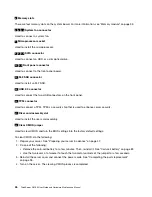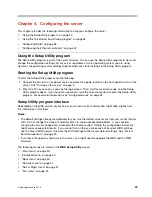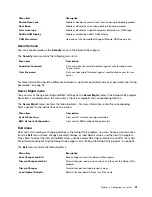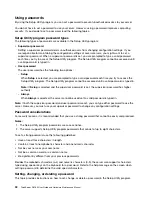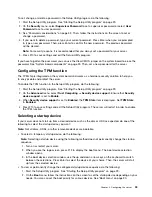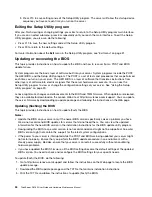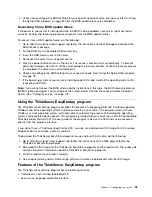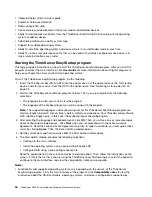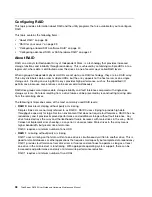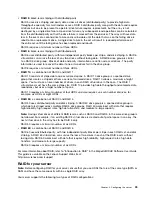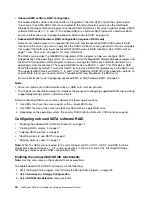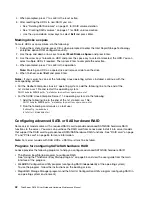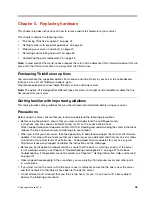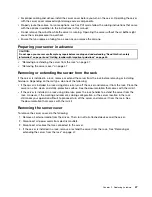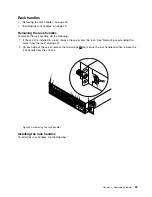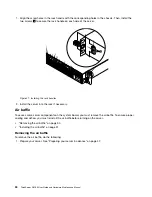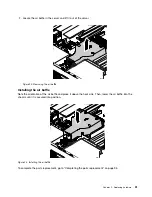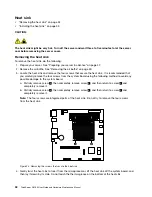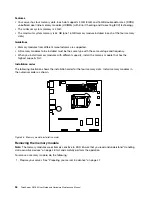
•
RAID 5
: block-level striping with distributed parity
RAID 5 uses disk striping and parity data across all drives (distributed parity) to provide high data
throughput, especially for small random access. RAID 5 distributes parity along with the data and requires
all drives but one to be present to operate; drive failure requires replacement, but the array is not
destroyed by a single drive failure. Upon drive failure, any subsequent read operations can be calculated
from the distributed parity so that the drive failure is masked from the end user. The array will have data
loss in the event of a second drive failure and is vulnerable until the data that was on the failing drive is
rebuilt onto a replacement drive. A single drive failure in the set will result in reduced performance of
the entire set until the failing drive has been replaced and rebuilt.
RAID 5 requires a minimum number of three HDDs.
•
RAID 6
: block-level striping with distributed parity
RAID 6 uses distributed parity, with two independent parity blocks per stripe, and disk striping. A RAID 6
virtual drive can survive the loss of any two drives without losing data. A RAID 6 drive group is similar
to a RAID 5 drive group. Blocks of data and parity information are written across all drives. The parity
information is used to recover the data if one or two drives fail in the drive group.
RAID 6 requires a minimum number of three HDDs.
•
RAID 10
: a combination of RAID 0 and RAID 1
RAID 10 consists of striped data across mirrored spans. A RAID 10 drive group is a spanned drive
group that creates a striped set from a series of mirrored drives. RAID 10 allows a maximum of eight
spans. You must use an even number of drives in each RAID virtual drive in the span. The RAID 1
virtual drives must have the same stripe size. RAID 10 provides high data throughput and complete data
redundancy but uses a larger number of spans.
RAID 10 requires a minimum number of four HDDs and also requires an even number of drives, for
example, six HDDs or eight HDDs.
•
RAID 50
: a combination of RAID 0 and RAID 5
RAID 50 uses distributed parity and disk striping. A RAID 50 drive group is a spanned drive group in
which data is striped across multiple RAID 5 drive groups. RAID 50 works best with data that requires
high reliability, high request rates, high data transfers, and medium-to-large capacity.
Note:
Having virtual drives of different RAID levels, such as RAID 0 and RAID 5, in the same drive group is
not allowed. For example, if an existing RAID 5 virtual drive is created out of partial space in an array, the
next virtual drive in the array has to be RAID 5 only.
RAID 50 requires a minimum number of six HDDs.
•
RAID 60
: a combination of RAID 0 and RAID 6
RAID 60 uses distributed parity, with two independent parity blocks per stripe in each RAID set, and disk
striping. A RAID 60 virtual drive can survive the loss of two drives in each of the RAID 6 sets without
losing data. RAID 60 works best with data that requires high reliability, high request rates, high data
transfers, and medium-to-large capacity.
RAID 60 requires a minimum number of six HDDs.
For more information about RAID, refer to “Introduction to RAID” in the
MegaRAID SAS Software User Guide
.
This guide is available on the Lenovo Support Web site at:
http://www.lenovo.com/support
RAID for your server
Note:
Before configuring RAID for your server, ensure that you use HDDs that are of the same type (SATA or
SAS) and have the same capacity within a single RAID array.
Your server supports the following two types of RAID configurations:
.
39
Содержание ThinkServer RS160
Страница 1: ...ThinkServer RS160 User Guide and Hardware Maintenance Manual Machine Types 70TD 70TE 70TF and 70TG ...
Страница 14: ...xii ThinkServer RS160 User Guide and Hardware Maintenance Manual ...
Страница 18: ...4 ThinkServer RS160 User Guide and Hardware Maintenance Manual ...
Страница 42: ...28 ThinkServer RS160 User Guide and Hardware Maintenance Manual ...
Страница 58: ...44 ThinkServer RS160 User Guide and Hardware Maintenance Manual ...
Страница 118: ...104 ThinkServer RS160 User Guide and Hardware Maintenance Manual ...
Страница 129: ...Taiwan BSMI RoHS declaration Appendix C Restriction of Hazardous Substances RoHS Directive 115 ...
Страница 130: ...116 ThinkServer RS160 User Guide and Hardware Maintenance Manual ...
Страница 141: ......
Страница 142: ......


